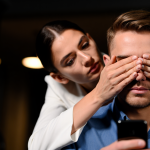
Market Correction Definition: Debunking Myths and Unveiling Realities
June 7, 2024
Introduction: Market Correction: Navigating Through the Chaos
The dance between bullish and bearish markets is an intricate waltz, and our approach is rooted in embracing the trend, not chasing elusive definitions. While the term “market correction” evokes images of precision and predictability, it is, in reality, a vague concept that offers little practical value to investors. Fixating on the definition of a market correction is sheer folly, akin to chasing shadows. Instead, our philosophy revolves around adaptability and capitalizing on opportunities presented by market fluctuations.
In today’s market landscape, dominated by influential players and arbitrary corrections, our strategy is clear: follow the trend. We recognize market manipulation is prevalent, so we don’t waste effort predicting exact entry or exit points. Instead, we invest our time and resources in understanding and riding the prevailing upward or downward trend. This trend-centric approach simplifies investment decisions and provides a robust framework for navigating chaotic markets.
The wisdom of renowned investors like Montaigne and Munger resonates here. Munger, in particular, emphasizes the importance of recognizing one’s limitations and adapting to the market’s whims. He cautions against the arrogance of attempting to time the market perfectly, advocating instead for a humble approach that embraces the ebb and flow of stock prices. This philosophy aligns with our belief in embracing corrections and crashes not as obstacles but as opportunities to be seized.
The essence of our strategy is not to resist or fear market corrections but to prepare for them and leverage their potential. This mindset shift is crucial, transforming corrections from daunting events to catalysts for growth. We encourage investors to view corrections as a chance to strengthen their portfolios, taking advantage of discounted prices and positioning themselves for future gains. This proactive approach, informed by the wisdom of market sages, sets our philosophy apart.
As Munger wisely asserts, “The first rule of investing is don’t lose money.” This principle guides our trend-following strategy, which aims to minimize losses and maximize gains by aligning with the market’s direction. We invite you to embark on this journey, embracing market corrections with open arms and clearly understanding that volatility is not the enemy but a force to be harnessed.
Let go of the futile pursuit of defining market corrections and instead embrace the wisdom of adaptability. In Montaigne’s words, “There is no conversation more boring than the one where everybody agrees.” Likewise, in investing, it is through embracing diverse market movements that we find genuine opportunity.
Navigating Market Entry: The Elusive Quest for Perfection
The pursuit of pinpointing the exact top or bottom in market movements is akin to chasing a mirage. While it may seem appealing to time the market precisely, this fixation on perfection often leads to paralysis and missed opportunities. Renowned investors like Warren Buffett and Charlie Munger caution against this mindset. Munger, in particular, emphasizes the folly of attempting to predict market peaks and troughs, advocating for a more pragmatic approach.
Buffett, a master of long-term investing, famously stated, “Be fearful when others are greedy, and greedy when others are fearful.” This wisdom underscores the importance of recognizing market corrections as opportunities rather than obstacles. Instead of striving for impossible precision, investors should focus on identifying robust pullbacks as prime buying moments. By doing so, they can harness the power of market trends and avoid the regret of missing out on bullish runs.
Market Savvy: When Education Meets Pragmatism
The adage “knowledge is power” rings true, but it is essential to distinguish between academic knowledge and practical wisdom. The presence of PhDs and higher education does not guarantee investment success. This is where the insights of investors like George Soros and Nassim Nicholas Taleb come into play. Soros, a legendary investor, highlights the importance of adaptability and recognizing market patterns. He emphasizes that market behaviour often defies purely rational explanations, and successful investors can interpret and respond to these patterns.
In his book The Black Swan, Nassim Taleb introduces the concept of “black swan events,” emphasizing the unpredictable nature of certain market occurrences. He cautions against relying solely on past data and encourages investors to embrace uncertainty. This pragmatic approach to investing recognizes that market corrections are not linear and that attempting to predict them with academic precision is futile. Instead, investors should develop strategies that can adapt to market fluctuations.
The choice facing investors is clear. On the one hand, they can embrace the reality of market corrections, view pullbacks as opportunities, and take action accordingly. On the other hand, they can remain stagnant, repeating the same patterns and hoping for a different outcome. Taleb wisely notes, “It is not the responsibility of reality to conform to our expectations.” Investors must adapt to the ever-changing market landscape and embrace the uncertainty that comes with it.
Riding the Waves of Market Trends: An Ancient Wisdom Approach
In the tumultuous sea of market fluctuations, ancient Chinese philosophers and modern investing experts alike offer valuable guidance. As the three indices surge upward, we find ourselves navigating choppy waters. The markets, trading within overbought ranges, are releasing pressure, and volatility is likely to persist. This volatility, often misinterpreted as a harbinger of doom, presents opportunities for savvy investors.
The revered Chinese philosopher Confucius once said, “The superior man is calm and unperturbed, yet constantly on the move, like the swallows and ducks that dart and weave in their flight but always have a place to roost.” In investing, this wisdom encourages us to embrace market trends and adapt to changing conditions. Pullbacks are inevitable, giving us chances to initiate positions in robust companies. The stronger the pullback, the more attractive the opportunity.
Sun Tzu, the ancient Chinese military strategist, offers a similar perspective in his famous work, *The Art of War*. He writes, “Opportunities multiply as they are seized.” This principle applies perfectly to market corrections. By recognizing and acting upon pullbacks, investors can create their opportunities. Those who wait indefinitely for the “perfect entry point” will find themselves trailing behind, a victim of what Sun Tzu calls “the paralysis of analysis.”
As we navigate the markets, we must heed the advice of modern investing experts like Ray Dalio and Howard Marks. Dalio, a founder of Bridgewater Associates, emphasizes the importance of understanding market trends and capitalizing on pullbacks. He advocates for a pragmatic approach, stating, “The best way to handle things is to create an environment in which good decisions are made over time.” This aligns with the ancient Chinese concept of “Wu Wei,” or effortless action, which encourages investors to work with the market’s natural flow rather than against it.
Marks, a renowned investor and author, cautions against the euphoria trap, where investors buy at market peaks out of fear of missing out. He writes, “The key to investing is not assessing how much an industry is going to affect society, or how much it will grow, but rather determining the price one should pay for a given security.” This wisdom underscores the importance of valuing investments based on their intrinsic worth rather than getting caught up in market euphoria.
In conclusion, by combining the ancient wisdom of Chinese philosophers with the insights of modern investing experts, we can navigate market corrections with a calm and strategic mindset. Embracing pullbacks as opportunities, adapting to changing trends, and avoiding the euphoria trap are key tenets of a successful investing journey. The ancient Chinese proverb says, “The wise adapt themselves to circumstances, as water moulds itself to the pitcher.”
Market Correction Definition is the wrong topic to focus on; instead, focus on identifying the trend. Sol Palha
Conclusion
In conclusion, the journey through market corrections and volatile times requires a pragmatic and adaptable mindset. Ancient Chinese philosophers and modern investing experts guide us toward recognizing and embracing opportunities within market fluctuations. By understanding that market corrections are an inherent part of the investing landscape, we can shift our focus from predicting exact entry points to capitalizing on robust pullbacks.
The wisdom of Montaigne, Munger, Buffett, Soros, and Taleb encourages us to approach investing with humility and respect for market trends. Their insights teach us that perfection is unattainable, and instead, we should strive to make well-informed decisions within the context of prevailing trends. By recognizing the limitations of academic knowledge and embracing the unpredictable nature of “black swan events,” we can navigate corrections with resilience and foresight.
Moreover, the ancient Chinese philosophers Confucius and Sun Tzu offer timeless advice that resonates in the modern investing arena. Their teachings encourage us to remain calm and proactive, seizing opportunities presented by market pullbacks. This ancient wisdom aligns with the practical strategies of renowned investors like Ray Dalio and Howard Marks, who emphasize understanding market trends and avoiding the euphoria trap.
In essence, our journey through market corrections is illuminated by the collective wisdom of these experts and philosophers. We are reminded to adapt to changing market conditions, recognize patterns, and make informed decisions. By embracing volatility and pullbacks, we can create opportunities and avoid the pitfalls of indecision and euphoria. As we navigate the ever-changing financial landscape, let us be guided by the balance of ancient wisdom and modern expertise, leading us toward successful and resilient investing endeavours.










